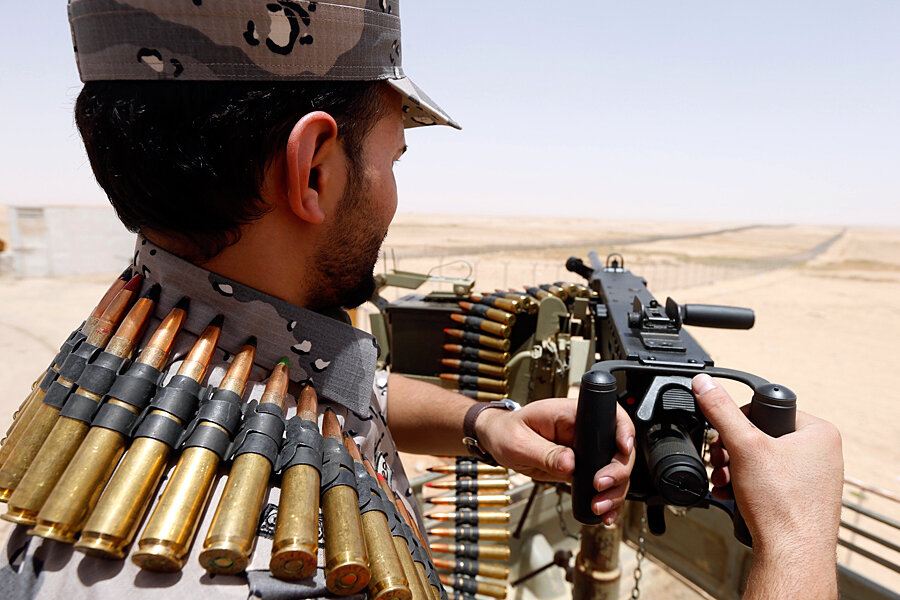Saudi border fight with militants: How much of a threat?
Loading...
| Washington
A deadly confrontation on the Iraq-Saudi Arabia border Monday – between Saudi border guards and heavily armed men operating from Iraq’s Islamic State-controlled Anbar Province – presents a problematic US ally with the worrisome threat of rising challenges to internal security.
Saudi Arabia has long battled efforts by Al Qaeda to undermine the Western-backed Saudi royalty and its role as keeper of Islam’s holiest sites.
But now the Islamic State (IS) has joined the battle against the Saudi government, especially since IS forces swept into Iraq from Syria last year and Saudi Arabia signed on to the US-led coalition that aims to defeat IS.
IS has called on its followers to attack representatives of the Saudi state, in particular Saudi security forces. Saudi officials said Monday they had not yet determined that the border clash was the work of militants from IS, also known as ISIS or ISIL. But some experts have little doubt about who carried out the attack.
“This is another case of a terrorist attack by ISIS against Saudi Arabia, which is an important target for ISIS because it is home to the holiest cities in Islam, Mecca and Medina,” says Lori Plotkin Boghardt, a former US intelligence analyst specializing in the Persian Gulf states now at the Washington Institute for Near East Policy. “Unfortunately, because of that significance in Islam as well as the Saudis’ role in the anti-ISIS coalition, I think we can expect more such attacks and efforts at undermining the Saudi state in the coming months.”
Early Monday morning a group of militants, some wearing suicide belts, clashed with Saudi border guards near the Saudi city of Arar, across the border from Iraq’s Anbar Province. By the end of the skirmish, three Saudi border guards and their commanding officer – a Saudi general – were dead, as were four militants. At least one of the assailants detonated an explosive belt after being captured by the Saudi guards.
Some regional analysts say the attack looked more like the work of Al Qaeda-affiliated militants because it resembled the kind of infiltration operation that militants from Al Qaeda in the Arabian Peninsula have attempted along the Saudi border with Yemen. But for others like Dr. Boghardt, the attack was almost certainly the work of IS militants.
Beyond the question of who carried out the operation is the crucial issue of how Saudi authorities are responding to such threats. Despite some degree of support for IS among the Saudi public and religious establishment, the Saudi political leadership is demonstrating none of the caution and ambivalence toward the IS threat that it did in the past concerning Al Qaeda’s influence in the kingdom, Boghardt says.
“The Saudi authorities view ISIS as a terrorist threat and are taking significant steps to deal with that threat and to mobilize Saudi society through the media and religious establishment to reject ISIS influence,” she says. “That’s a very different approach from the one the authorities took towards Al Qaeda and its support in the kingdom.”
In the years after the 9/11 attacks (carried out largely by Saudi citizens), the Saudi political leadership saw Al Qaeda as an “existential threat” because of the support it enjoyed among the religious establishment and the public, Boghardt says.
But despite some support – including considerable past financial aid – for IS within Saudi society, “the situation today is completely different,” she says.
That difference, Boghardt says, suggests that while IS militants will probably continue to pose a security threat to Saudi Arabia, the potential for IS-inspired political instability is less than the political threat that Al Qaeda presented in the past.






